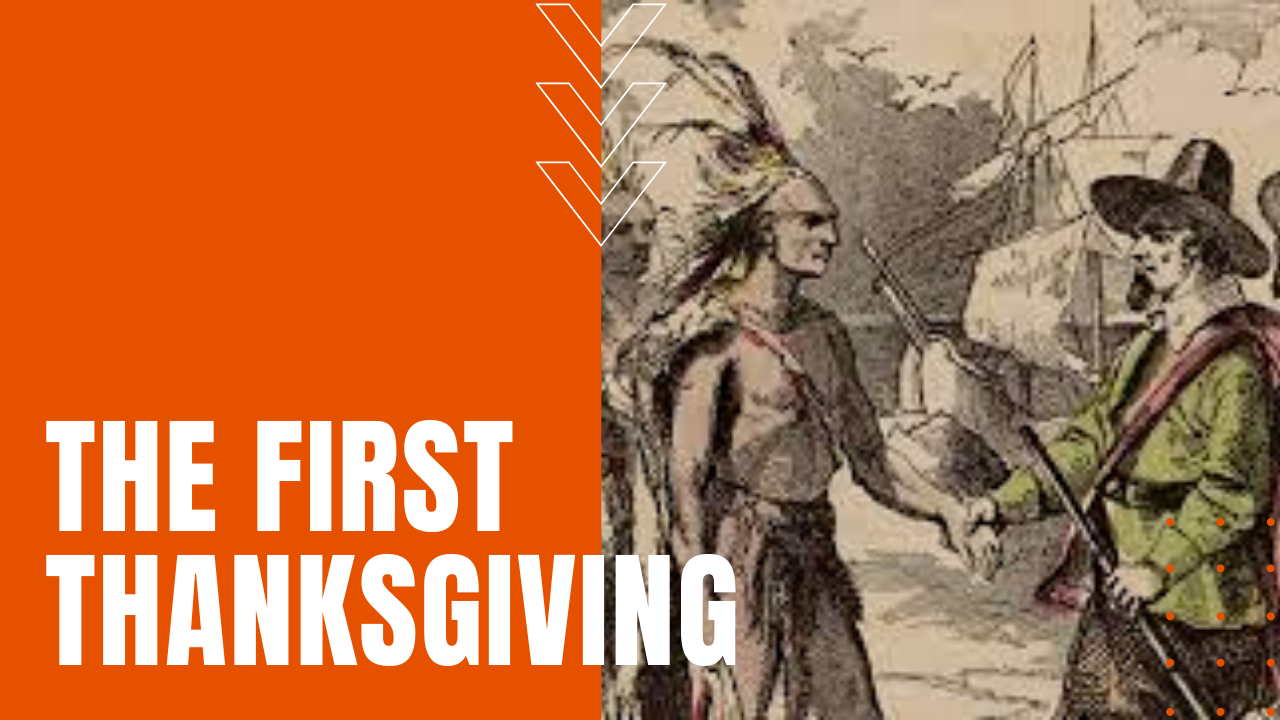The First Thanksgiving

Autumnal celebrations of thanksgiving harken back to early man, when human survival depended largely on animal and agricultural husbandry, which made the coming of winter the scariest time of their collective lives. Once their winter food stocks were harvested and stored, there was a communal sense that this was all they had to carry them through the barren days of winter, giving early man a commonly-felt swallow of trepidation.
Instead of worrying over their future survival, early man flipped their fears into a celebration of abundance and thanksgiving, which continues to resonate to this day.
Pilgrims on the Mayflower
When the Mayflower set sail from Plymouth England in September of 1620, 102 passengers made a treacherous 66-day passage to Cape Code, after being blown badly off course from their intended destination at the mouth of the Hudson River. One month later, the Mayflower sailed across Massachusetts Bay, where the Pilgrims established the village of Plymouth.
Spending their first winter aboard the Mayflower, half of the Pilgrims would perish from exposure, scurvy and the outbreak of infectious disease.
Squanto Helps The Pilgrims
Once the surviving Pilgrims moved ashore the following Spring, an English-speaking Native American named Squanto, who had learned English while enslaved by an English sea captain, taught the Pilgrims how to cultivate corn, extract sap from maple trees, as well as hunting and fishing techniques that vastly improved their food stocks.
The First Thanksgiving
After the Pilgrims’ first corn harvest proved successful by November of 1621, Governor William Bradford called for a feast with the Native Americans who had helped them survive their first months ashore. Considered America’s first thanksgiving, the Pilgrims’ feast with the Wampanoag Indians lasted three days, consisting of dishes likely prepared using traditional Native American spices and cooking techniques.
The meals most assuredly lacked cakes and pies, due to the Pilgrim’s dwindling supply of sugar by the fall of 1621, but surviving Pilgrim diaries attest to a variety of dishes, including lobster, seal, wild turkeys, waterfowl and deer, making the first Thanksgiving one of the first and last times that white European colonists and Native Americans would break bread under a common banner of peace.
